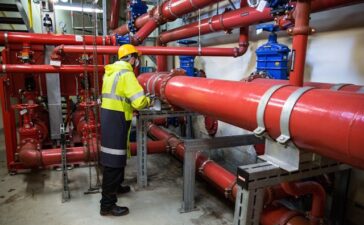Unmanned aerial vehicles (UAVs), also known as drones, are aircraft that may be piloted remotely or flown autonomously according to algorithms or automation systems. This technology is being used by a wide range of businesses and organizations, including the government and recreational users.
This technology is being used by a wide range of businesses and organizations, including military and recreational users. It’s important to evaluate all sides of the discussion in order to evaluate the benefits and drawbacks of drones. If you want a drone to help you out for inspection purposes, simply check out drone inspection services

There are several reasons to advocate the usage of drones, for example, drones are fantastic for shooting high-quality aerial images and video, as well as gathering large quantities of imaging data. These high-resolution photos may be used to make 3D maps that have a wide range of applications. 3D mapping of catastrophe regions, for example, may help rescue crews prepare before entering dangerous circumstances.
Unmanned aerial aircraft may also be programmed and steered precisely to specific places since they utilize GPS (Global Positioning System). This is very useful in a number of circumstances. UAVs are employed in precision agriculture for a number of tasks, including spraying fertilizer and pesticides, detecting weed infestations etc. Farmers benefit from the accuracy of UAVs in terms of both time and money.
They’re also quite simple to set up. Most drones can now be deployed and controlled with very little expertise thanks to advancements in control technology. Drones are becoming more accessible to a wider variety of operators, because of the relatively inexpensive cost of most models. In addition, UAVs have a wider range of motion than human aircraft. They can fly lower, making it easier for them to explore historically difficult-to-reach regions.
Another advantage of drone usage is security. Operators may employ unmanned aerial vehicles to offer security to private firms, athletic events, public meetings, and other places. Drones can also collect useful data during catastrophes to help with security and recovery. While there are obvious advantages to employing drones, there are a number of perceived obstacles to their use. These considerations are crucial to think about, especially considering the vast variety of scenarios in which drones may be deployed.

Because unmanned aerial vehicles are still relatively new, the law is only gradually catching up. Conflicts between federal rules and certain state and municipal laws add to the complexity of the legislative situation. When it comes to unmanned aerial vehicles, safety is paramount. UAVs must be designed with “detect and avoid” capabilities that equal those of human aircraft to prevent mid-air collisions. Drones must be able to identify and avoid possible collisions. Falling drones represent another severe threat in the case of a system failure, particularly when they are employed near huge crowds or in densely inhabited regions. One of the really prominent worries concerning UAVs among the general public is confidentiality. Drones can gather data and photographs without attracting notice, leading to concerns that people’s rights are being violated. If government agencies deploy drones to surveil the people, it would be catastrophic.





